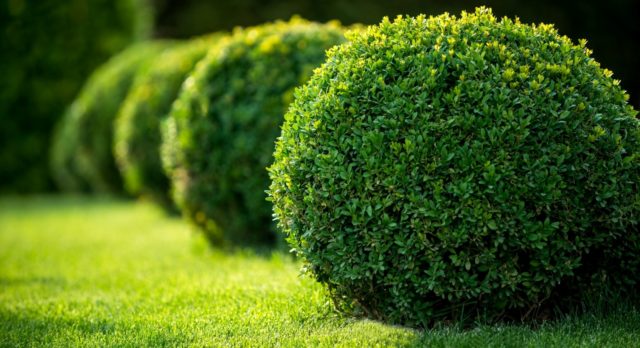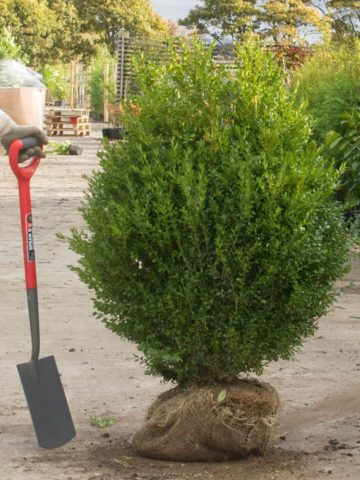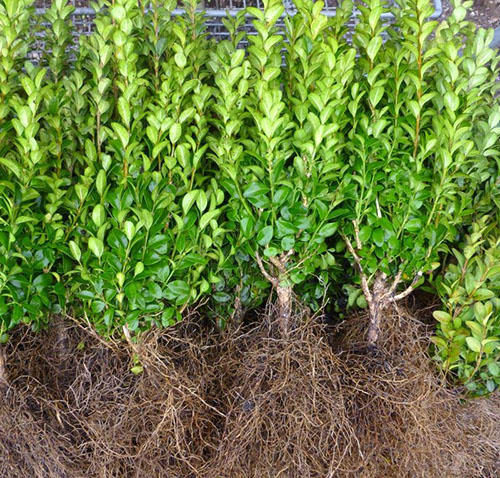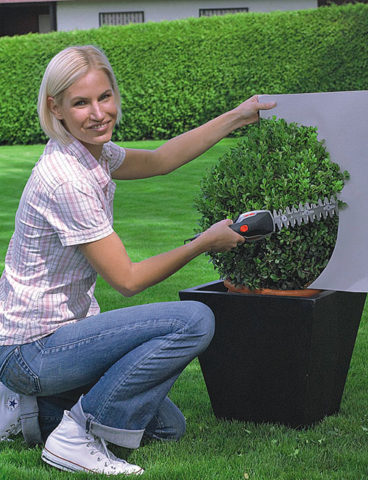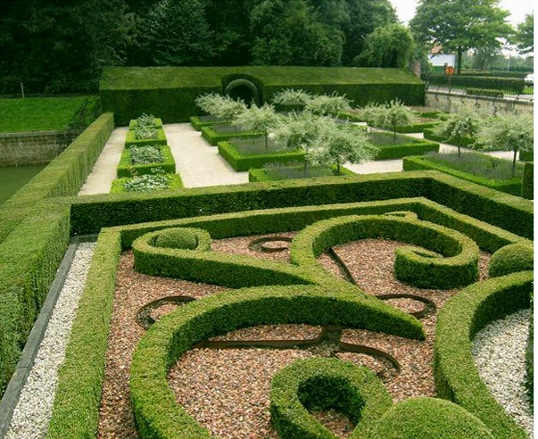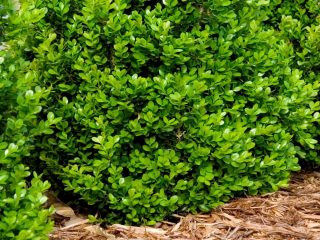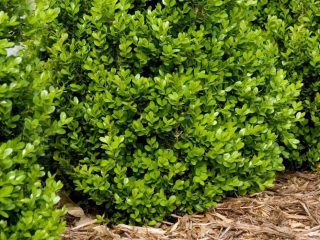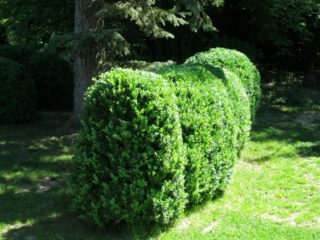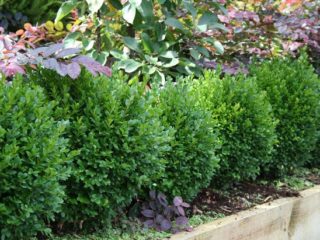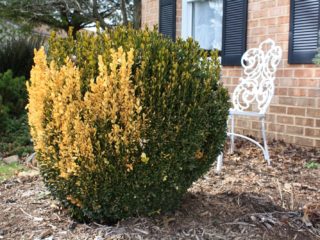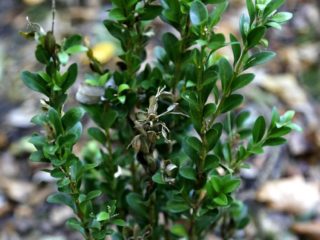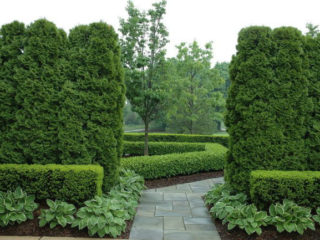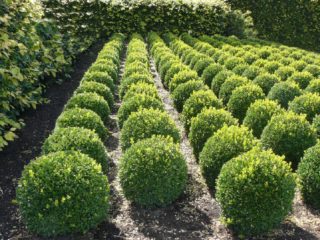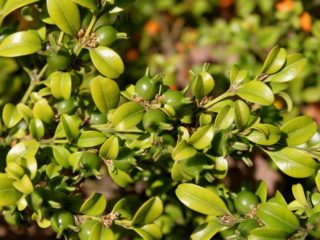Content
Boxwood (buxus) is an evergreen plant with a dense crown and glossy foliage. It is undemanding in care, tolerates haircuts well and retains its shape steadily. The plant is used in ornamental gardening for landscaping, creating topiaries, borders and hedges. Boxwood can be replanted in spring and autumn. If planting rules are followed, seedlings take root easily and quickly.
Features of transplanting adult boxwood
Transplanting a boxwood, already an adult plant, to another place is possible at any age. In order for it to take root well, you should follow the recommendations:
- The best time for transplantation is spring. During the summer and autumn, the boxwood will take root well, which will allow it to survive the winter.
- An adult specimen is transplanted with a soil ball; to do this, it is dug in on all sides to the depth of a spade bayonet and then removed from the ground.
- The transplantation rules are the same as when planting seedlings in open ground.
When can boxwood be replanted?
Boxwood blooms in spring.The optimal transplant time for it is autumn. Thanks to its unpretentiousness, spring and summer replantings are also successful.
Transplanting boxwood in the fall to a new place
To transplant boxwood in the fall, the time is chosen so that it has time to take root before the onset of frost. The shrub needs about a month to recover, so the optimal period is the second half of September - early October.
If the seedling is acquired at a later date, then it is dug in for the winter, covered with a waterproof, lightweight covering material. Plastic film should not be used for this purpose.
The peculiarity of autumn transplantation is that when the earth settles, the box must be mulched. The following is used as mulch:
- agrofabric;
- lowland peat;
- wood chips
Transplanting boxwood to a new location in spring
The advantage of replanting boxwood in spring is that it adapts in 15 to 20 days. Air temperature less than 30 oC and the absence of significant fluctuations contribute to successful rooting of the plant.
In temperate climates, the crop can be planted in early spring: late March - early April. Replanting in the summer is not recommended, since boxwood does not take root well in a new location at high temperatures.
To protect the roots of the transplanted buxus from the summer heat, it must be mulched with sand or perlite. The mulch is laid in a layer of 5 - 7 cm at a distance of approximately 2 cm from the trunk. This will ensure free air circulation.
How to transplant boxwood to another place
To safely transplant a boxwood bush, a certain procedure is followed. In general, they come down to several stages
Preparing the plant
To prepare a seedling for planting in the ground, you can use one of the following methods:
- if the boxwood is in a container, then a day before transplanting, the soil is spilled generously with water - this will make it easy to remove the seedling;
- if the specimen has bare roots, then carefully remove the soil from them and place them in water for 24 hours.
Preparing the site
Boxwood is planted in a shaded place, next to large plants or buildings. Groundwater should not come close to the surface of the earth.
If you plan to trim the bush frequently, giving it the necessary shape, then the soil must be fertile: this will ensure good growth. Buxus feels better on acidic soils (pH>6). You can increase acidity using low-lying peat, humus, compost, and soil mixture (two parts sand and humus and one part turf soil).
Boxwood is transplanted into a hole when planting individually or into a shallow trench when forming a border or hedge. Depending on its variety and landscape design features, the recommended distance between seedlings is 30 - 50 cm. When creating a border, 10 specimens are planted per 1 meter.
The parameters of the holes should be three times the size of the root system. A layer of drainage is poured onto the bottom. You can use expanded clay, perlite (mixed 1:1 with soil from the pit) or a mixture of crushed stone and sand in a 1:1 ratio.
Fertilizer application
For successful transplantation, the soil is fertilized. Growth is stimulated with compost, nitrogen or complex fertilizers for evergreen crops. They are mixed dry evenly in a hole with soil.
Landing algorithm
- Place the boxwood in the hole.
- A seedling or an adult specimen is placed in the hole strictly vertically, with the roots straightened.
- They deepen it to the same level as in the previous place of growth.
- Then the substrate is gradually filled up to the growth height. To prevent the formation of voids, soil is added in portions, compacting each layer.
- After filling the hole with soil, the axle is watered. To do this, it is recommended to use well, rain or settled tap water. The required amount is calculated based on the size: for a plant 15 - 20 cm high, about 3 liters of water will be required.
- If the soil settles, add soil. There is no need to compact this layer. A small earthen mound is made around the trunk at a distance of 20 - 30 cm to prevent water from spreading during watering.
- The trunk circle (a piece of land near the trunk, corresponding to the diameter of the crown) is sprinkled with a layer of perlite 2 cm thick.
Caring for a transplanted plant
Boxwood does not require complex care after transplantation. But for each period of the year there are certain rules:
- After replanting in the fall, you need to ensure that the soil does not dry out. If the bush is located in a sunny place, then watering is carried out using the sprinkling method. For a good wintering, the crop is fed with phosphorus-potassium fertilizers. The first shrub trimming is carried out no earlier than spring.
- After spring transplantation, you should not apply fertilizers for a month. During the growing season, once a week you can feed the shrub with chicken droppings or a growth stimulator. In summer, in the absence of rain, watering should be done no more than once a week. If planting is carried out in the form of a border, then the plants must be well watered and trimmed by a third.
Conclusion
Boxwood can be replanted at any time of the year, except winter. For young specimens, autumn replanting is recommended, for unpretentious adult plants - spring replanting. The culture takes root well and can be used to implement bold and traditional solutions in the landscape design of a personal plot.
